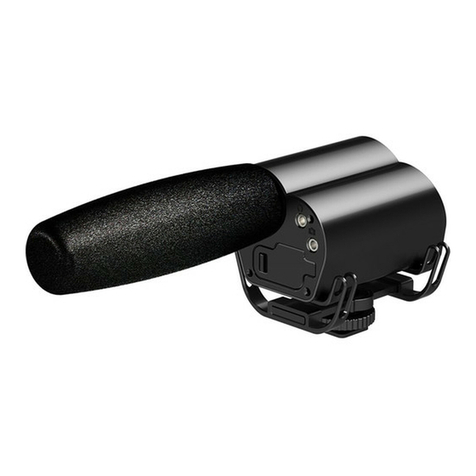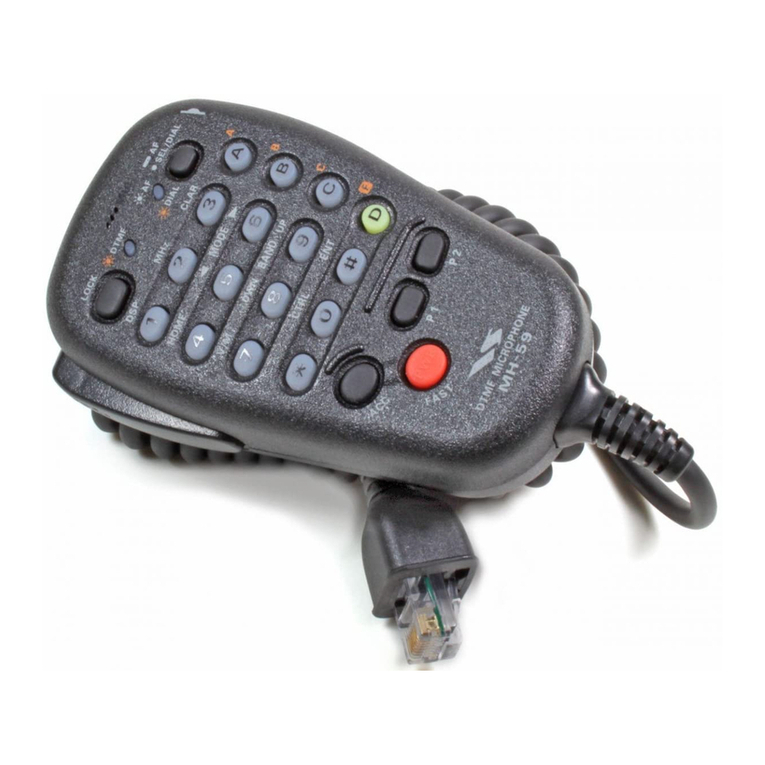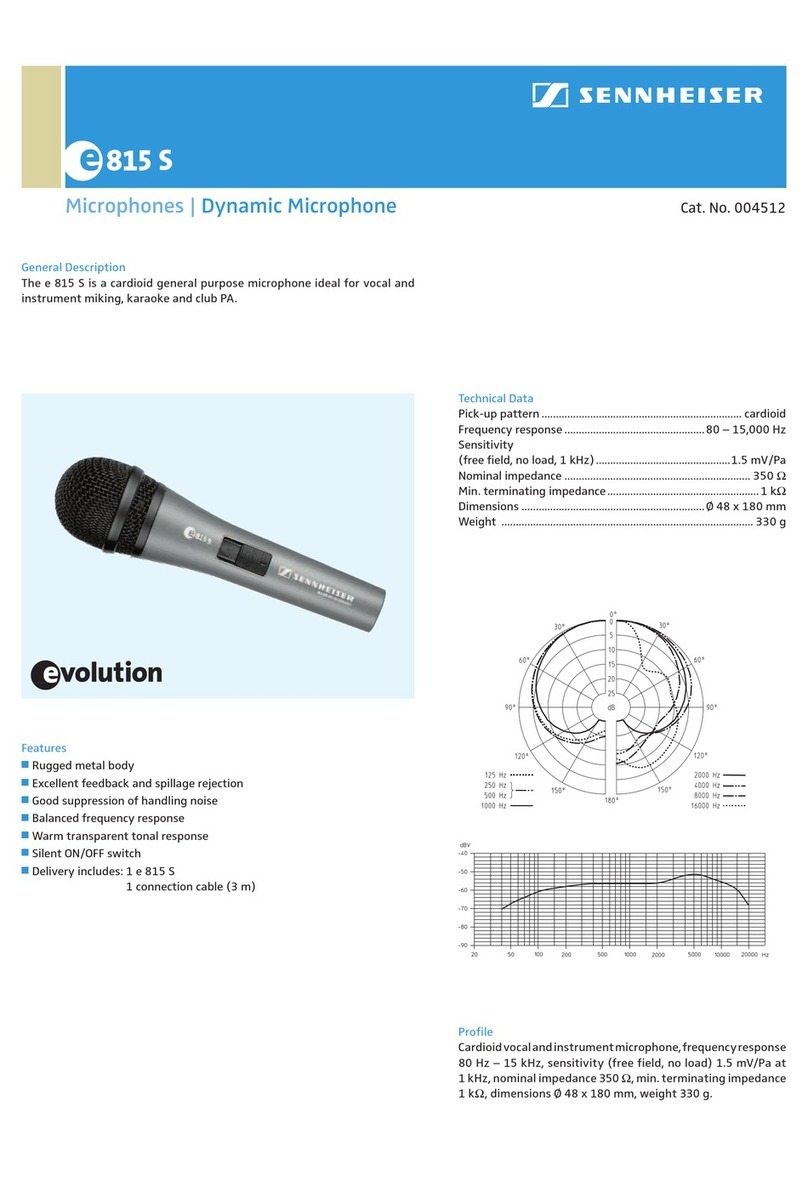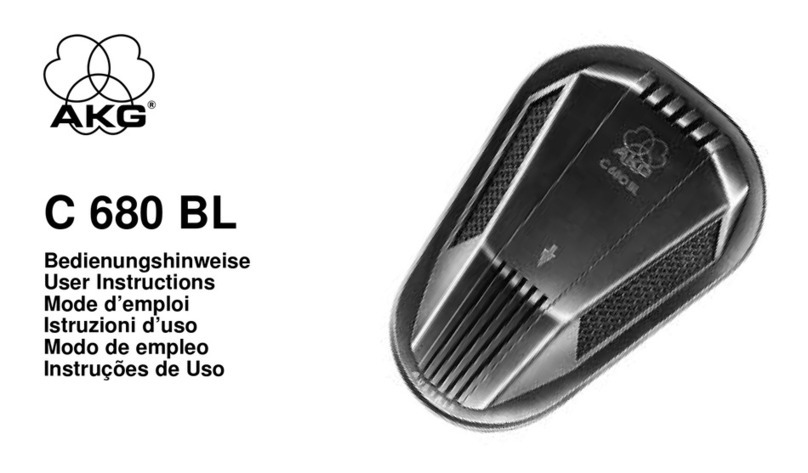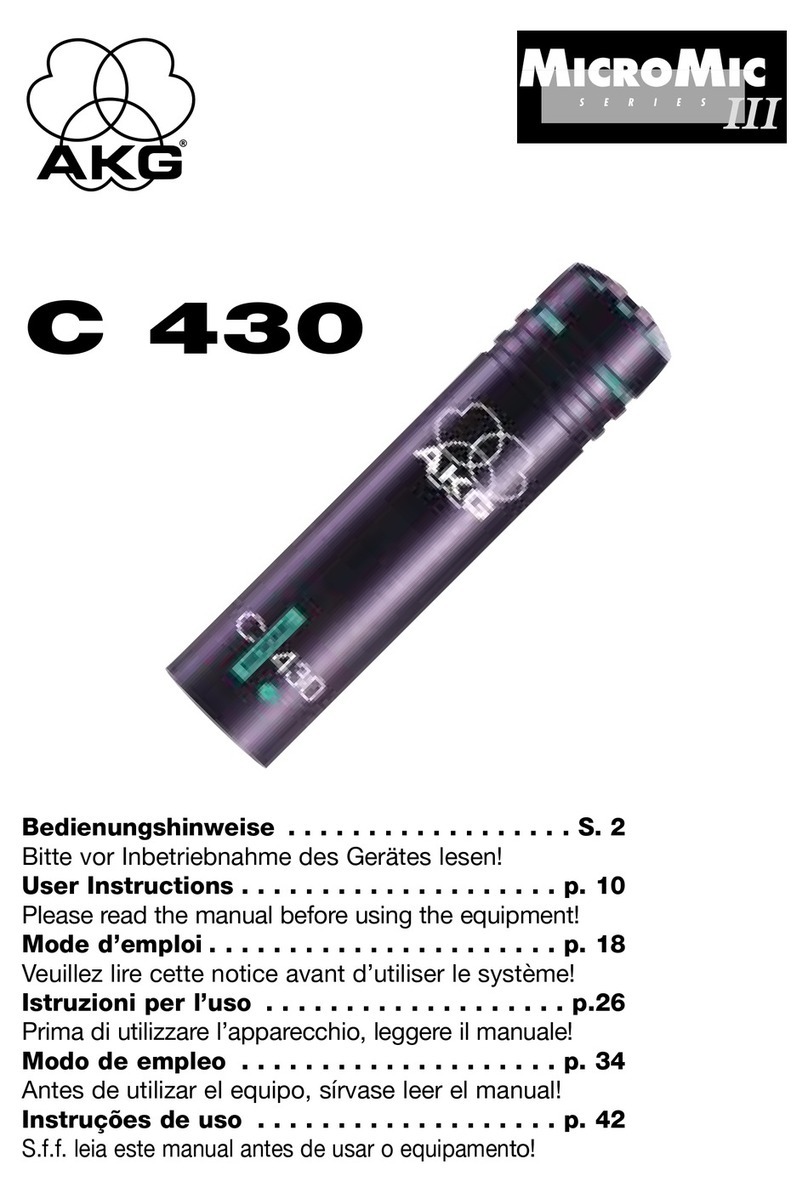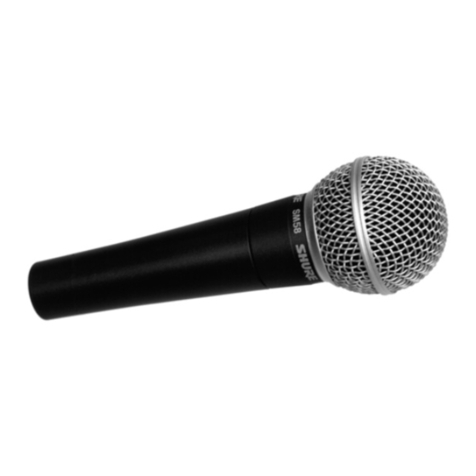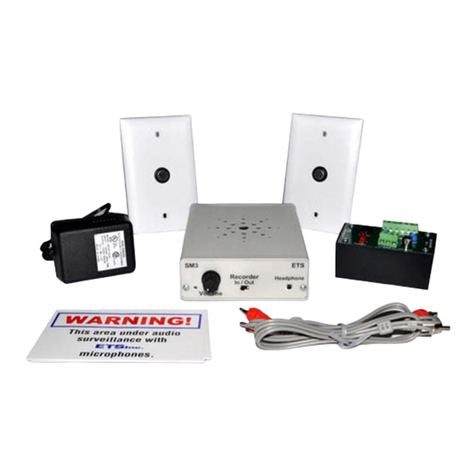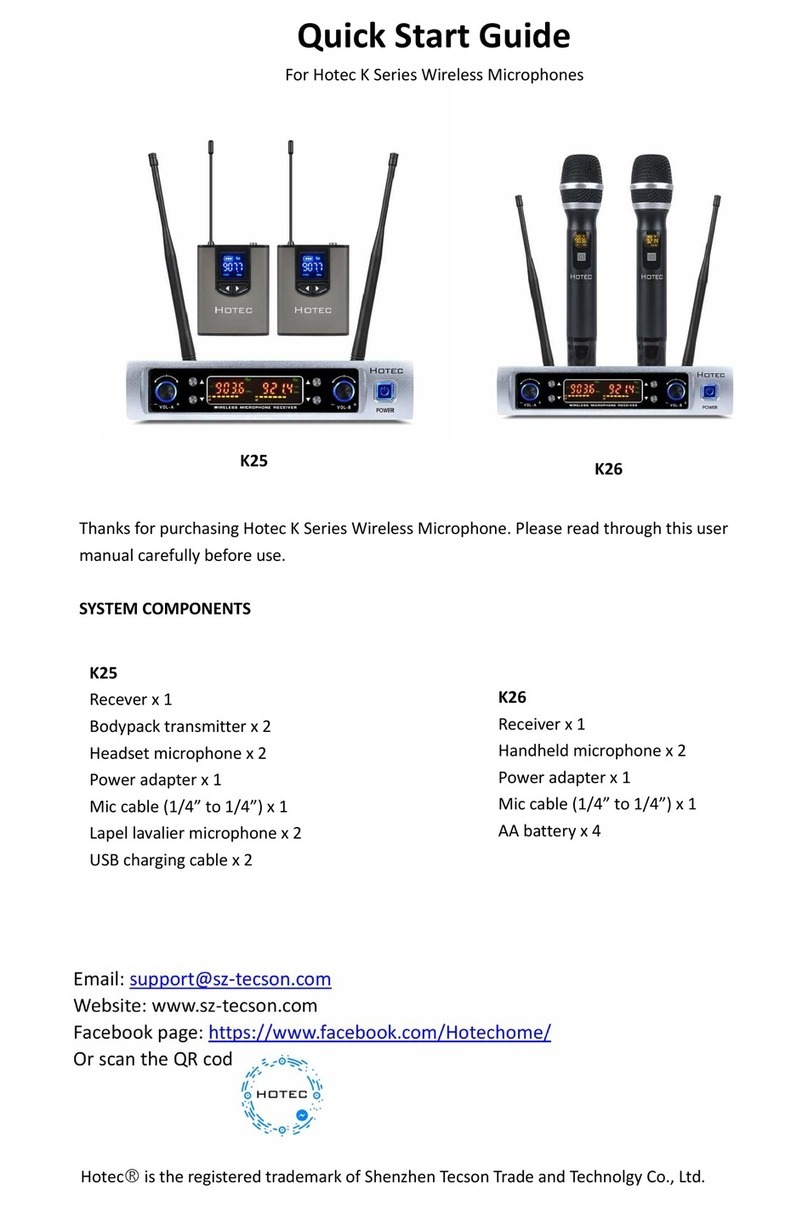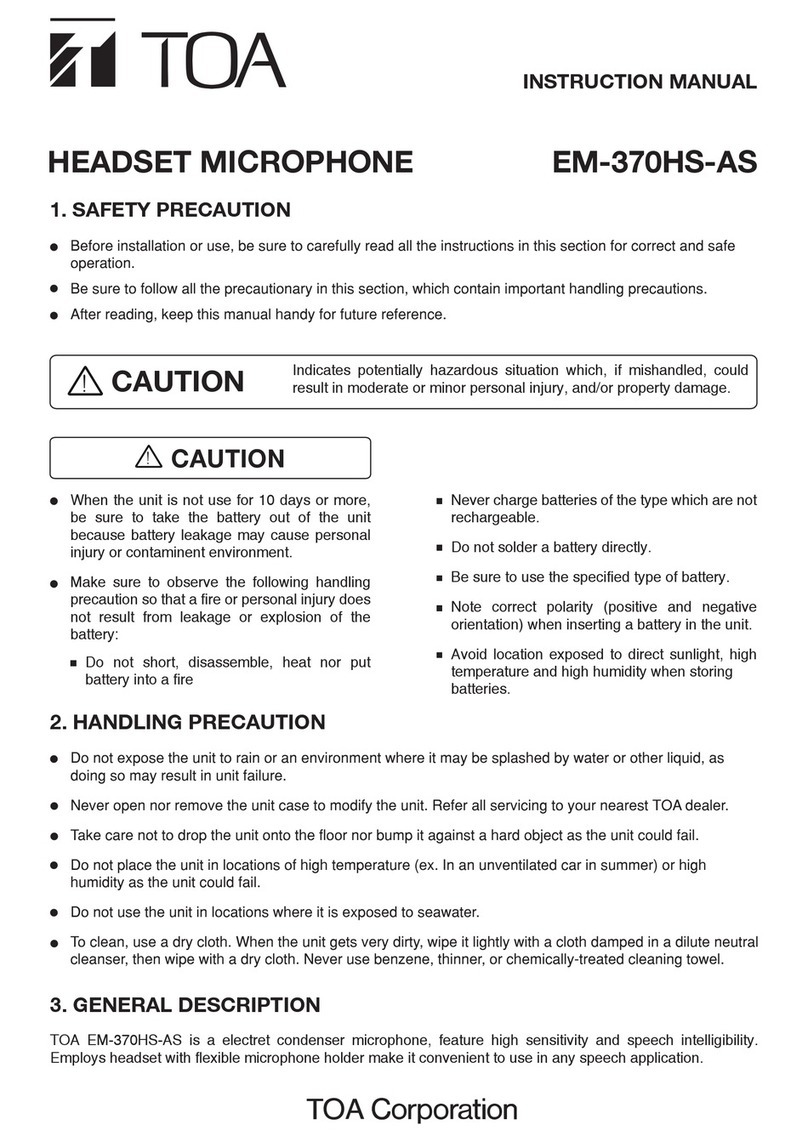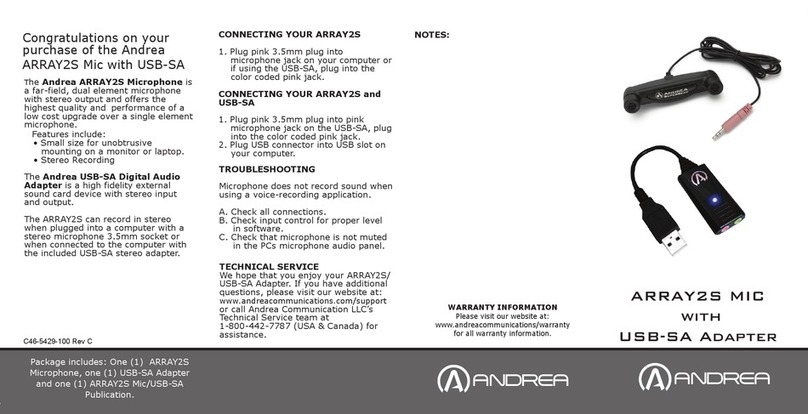Audio2000's AWM6032UL User manual

Audio2000'S AWM6032UL UHF Wireless Microphone System Handheld & Lapel –MR
AWM6032U - UHF Dual-Channel Wireless Microphone Systems
The Audio2000'S®AWM6032U wireless system is a UHF dual-channel wireless microphone system. Similar to the other
Audio2000'S®wireless systems, various transmitter options are provided to the AWM6032U system users as follows:
Handheld & Lavaliere Wireless Microphone System - AWM6032UL (AWR6032U + AWX6030 + AWX6030M)
With the exceptional RF transmission and reception, the AWM6032U system, with a transmission range of more than 100
feet, fully delivers all the reception and audio quality features that allow you to really enjoy the freedom of wireless without
any of the problems.
Engineered For Dependable UHF Systems
As all the other Audio2000'S®wireless products, the AWM6032U system has been engineered to be dependable UHF
system with a wide audio frequency range, high S/N ratio, and outstanding performance equal to that of any professional
wireless systems costing much more. This is achieved through strict component selection and high quality circuit
design. A delicately designed silence circuit eliminates static noise when the transmitters are either turned off or out of
transmission range. An auto mute circuit is incorporated in these systems to effectively eliminate the popping noise when
the switch is turned on or off.
System Designed For Accessibility
The AWM6032U system has been designed and manufactured to be dependable, problem free, versatile and easy to
use. The AWM6032U system is intended to be readily accessible to everyone with exceptional performance at a
preferred and affordable price.
APPLICATIONS
Musician; disc jockey (DJ); karaoke jockey (KJ); church; school; conference room; karaoke; home entertainment
AWR6032U RECEIVER
FEATURES
* UHF Band Frequency
* Two Independent XLR Balanced Outputs
* One 1/4" Unbalanced Audio Output
* RF Input with Built-in RF Preamplifier to Improve S/N Ratio, Sensitivity and Dynamic Range
* Low Noise Mixer Circuitry for Reducing interference
* Two Squelch Control Knobs (One for Each Channel) at the Rear Panel
* 12V-18V DC Power Supply

SPECIFICATIONS
Carrier Frequency Range
UHF Band
Frequency Stability
± 0.005%
Receiving Sensitivity
-105 dBm
S/N Ratio
80dB
T.H.D.
< 1%
Audio Output
¼” and XLR (0 – 300mV @ 600 Ohms)
Dimensions (W X H X D)
8.5” X 1.6” X 5.4” (215 X 40 X 138 mm)
AWX6030, AWX6030M, AWX6030H & AWX6030G TRANSMITTERS
FEATURES
* UHF Band Frequency
* High Sensitivity Cardioid Microphone Capsule
* Audio Level Adjustment Knob for the AWX6030M, AWX6030H, and AWX6030G
* Noise Reduction Mechanism for Eliminating Handling Noise and Switch Shock Noise
* Low Battery LED Indicator
SPECIFICATIONS
TRANSMITTER
Carrier Frequency Range
UHF Band
Frequency Stability
± 0.005%
Modulation
Frequency Modulation (FM)
Modulation Depth
40KHz
Output Power
30mW, Max
Spurious Emission
> 55 dB
Battery
9V Battery
Current Consumption
< 40 mA
Dimensions (W X H X D)
Handheld: 9.3” X 2.0” X 2.0” (235 X 50 X 50 mm)
Belt-Pack: 2.6” X 4.1” X 1.0” (65 X 105 X 25 mm)
SYSTEM
Carrier Frequency Range
UHF Band
Frequency Stability
± 0.005%
Audio Frequency Response
80 –15,000 Hz
Image and Spurious Rejection
50 dB Minimum
S/N Ratio
> 80 dB
Max. SPL
110 dB
T.H.D.
< 1%
Service Area
100 ft (30 M)
Operation Temperature
14 °F –122 °F (-10 °C –+50 °C)

SYSTEM OPERATION
(I) HANDHELD MICROPHONE SYSTEM
1. Set the antennas at an angle 45° from the floor and 90° away from each other to achieve the best RF
reception.
2. Connect the AWR6032U receiver DC input to an AC power source via the supplied AC/DC adapter.
3. Connect the AWR6032U receiver audio output to the microphone input of a mixer via the supplied audio cable
or any other appropriate cable. (Note: There are two outputs: one unbalanced output and one balanced
output.)
4. Place one 9V battery into the battery housing of the AWX6030 microphone with the battery polarity oriented
as indicated.
5. Turn on the power of the AWR6032U receiver. The Power On LED light will be turned on.
6. On the AWX6030, the On/Off switch has three positions: “ON”, “MUTE” and “OFF”. When the On/Off switch is
turned to the “MUTE” or directly to the “ON” position, the low battery LED indicator will blink once and then
stay off. If the low battery LED indicator stays on, the 9V battery needs to be replaced. When the On/Off
switch is set to the “MUTE” or “ON” position, the corresponding channel 1 RF LED light or channel 2 RF LED
light on the AWR6032U receiver will be turned on. The corresponding channel 1 AF LED light or channel 2 AF
LED light will be on whenever the AWX6030 receives any sound while the On/Off switch is set at the “ON”
position.
7. Adjust the volume control knob on the AWR6032U receiver to have an optimal sound quality.
(II) LAPEL (LAVALIERE) MICROPHONE SYSTEM
1. Set the antennas at an angle 45° from the floor and 90° away from each other to achieve the best RF
reception.
2. Connect the AWR6032U receiver DC input to an AC power source via the supplied AC/DC adaptor.
3. Connect the AWR6032U receiver audio output to the microphone input of a mixer via the supplied audio cable
or any other appropriate cable. (Note: There are two outputs: one unbalanced output and one balanced
output.)
4. Place one 9V battery into the battery housing of the AWX6030M transmitter with the battery polarity oriented
as indicated. Connect the supplied lapel (lavaliere) microphone to the AWX6030M transmitter.
5. Turn on the power of the AWR6032U receiver. The Power On LED light will be turned on.
6. On the AWX6030M, the On/Off switch has three positions: “ON”, “STDBY” and “OFF”. When the On/Off
switch is turned to the “STDBY” or directly to the “ON” position, the low battery LED indicator will blink once
and then stay off. If the low battery LED indicator stays on, the 9V battery needs to be replaced. When the
On/Off switch is set to the “STDBY” or “ON” position, the corresponding channel 1 RF LED light or channel 2
RF LED light on the AWR6032U receiver will be turned on. The corresponding channel 1 AF LED light or
channel 2 AF LED light will be on whenever the AWX6030M transmitter receives any sound while the On/Off
switch is set at the “ON” position. The audio level adjustment knob is preset at midpoint. If you need to
increase the audio level, use a screwdriver to turn the audio level adjustment knob clockwise. Turn the audio
level adjustment knob counter-clockwise to reduce the audio level.
7. Adjust the volume control knob on the AWR6032U receiver to have an optimal sound quality.
(III) HEADSET MICROPHONE SYSTEM
1. Set the antennas at an angle 45° from the floor and 90° away from each other to achieve the best RF
reception.
2. Connect the AWR6032U receiver DC input to an AC power source via the supplied AC/DC adapter.
3. Connect the AWR6032U receiver audio output to the microphone input of a mixer via the supplied audio cable
or any other appropriate cable. (Note: There are two outputs: one unbalanced output and one balanced
output.)
4. Place one 9V battery into the battery housing of the AWX6030H transmitter with the battery polarity oriented
as indicated. Connect the supplied headset microphone to the AWX6030H transmitter.
5. Turn on the power of the AWR6032U receiver. The Power On LED light will be turned on.
6. On the AWX6030H, the On/Off switch has three positions: “ON”, “STDBY” and “OFF”. When the On/Off
switch is turned to the “STDBY” or directly to the “ON” position, the low battery LED indicator will blink once
and then stay off. If the low battery LED indicator stays on, the 9V battery needs to be replaced. When the
On/Off switch is set to the “STDBY” or “ON” position, the corresponding channel 1 RF LED light or channel 2
RF LED light on the AWR6032U receiver will be turned on. The corresponding channel 1 AF LED light or
channel 2 AF LED light will be on whenever the AWX6030H transmitter receives any sound while the On/Off
switch is set at the “ON” position. The audio level adjustment knob is preset at midpoint. If you need to

increase the audio level, use a screwdriver to turn the audio level adjustment knob clockwise. Turn the audio
level adjustment knob counter-clockwise to reduce the audio level.
7. Adjust the volume control knob on the AWR6032U receiver to have an optimal sound quality.
(IV) GUITAR OR INSTRUMENT SYSTEM
1. Set the antennas at an angle 45° from the floor and 90° away from each other to achieve the best RF
reception.
2. Connect the AWR6032U receiver DC input to an AC power source via the supplied AC/DC adaptor.
3. Connect the AWR6032U receiver audio output to the guitar amplifier input via the supplied audio cable or any
other appropriate cable. (Note: There are two outputs: one unbalanced output and one balanced output.)
4. Place one 9V battery into the battery housing of the AWX6030G transmitter with the battery polarity oriented
as indicated. Connect the supplied guitar to the AWX6030G transmitter.
5. Turn on the power of the AWR6032U receiver. The Power On LED light will be turned on.
6. On the AWX6030G, the On/Off switch has three positions: “ON”, “STDBY” and “OFF”. When the On/Off
switch is turned to the “STDBY” or directly to the “ON” position, the low battery LED indicator will blink once
and then stay off. If the low battery LED indicator stays on, the 9V battery needs to be replaced. When the
On/Off switch is set to the “STDBY” or “ON” position, the corresponding channel 1 RF LED light or channel 2
RF LED light on the AWR6032U receiver will be turned on. The corresponding channel 1 AF LED light or
channel 2 AF LED light will be on whenever the AWX6030G transmitter receives any audio signal while the
On/Off switch is set at the “ON” position. The audio level adjustment knob is preset at midpoint. If you need
to increase the sound level, use a screwdriver to turn the audio level adjustment knob clockwise. Turn the
audio level adjustment knob counter-clockwise to reduce the sound level.
7. Adjust the volume control knob on the AWR6032U receiver to have an optimal sound quality.
OPERATION NOTES
1. The AWX6030, AWX6030M, AWX6030H, or AWX6030G needs to be turned off before changing the 9V
battery.
2. Signal dropout or unexpected noise may be caused by a low battery or by an excessive distance between the
transmitter and the receiver. If you encounter signal dropout or unexpected noise, please check the battery
first. If battery is still fresh, try to readjust the antennas on the AWR6032U receiver.
3. Avoid placing the receiver in a corner to prevent any RF reception deterioration.
4. Avoid placing the receiver antennas close to an obstruction or close to any metal surface.
5. Try to place the receiver as far away from any digital equipment, including computers and some CD players,
as possible.
6. If more than one AWM6032U wireless microphone systems are stacked together or placed in a rack, do not
let the antennas touch each other or cross each other.
7. Before the AWM6032U is to be used in a new location, place the AWR6032U receiver at the intended location
and walk-through the area with the transmitter to locate any radio frequency blind spot, where a momentary
loss of sound or short period of noise may occur whenever the transmitter is moved to this spot.
8. Do not drop the transmitter on the floor or strike the transmitter with any object.
9. Always turn off the transmitter and remove the battery if the transmitter is not to be used for a period of time to
prevent the transmitter from being damaged by a leaking battery.


